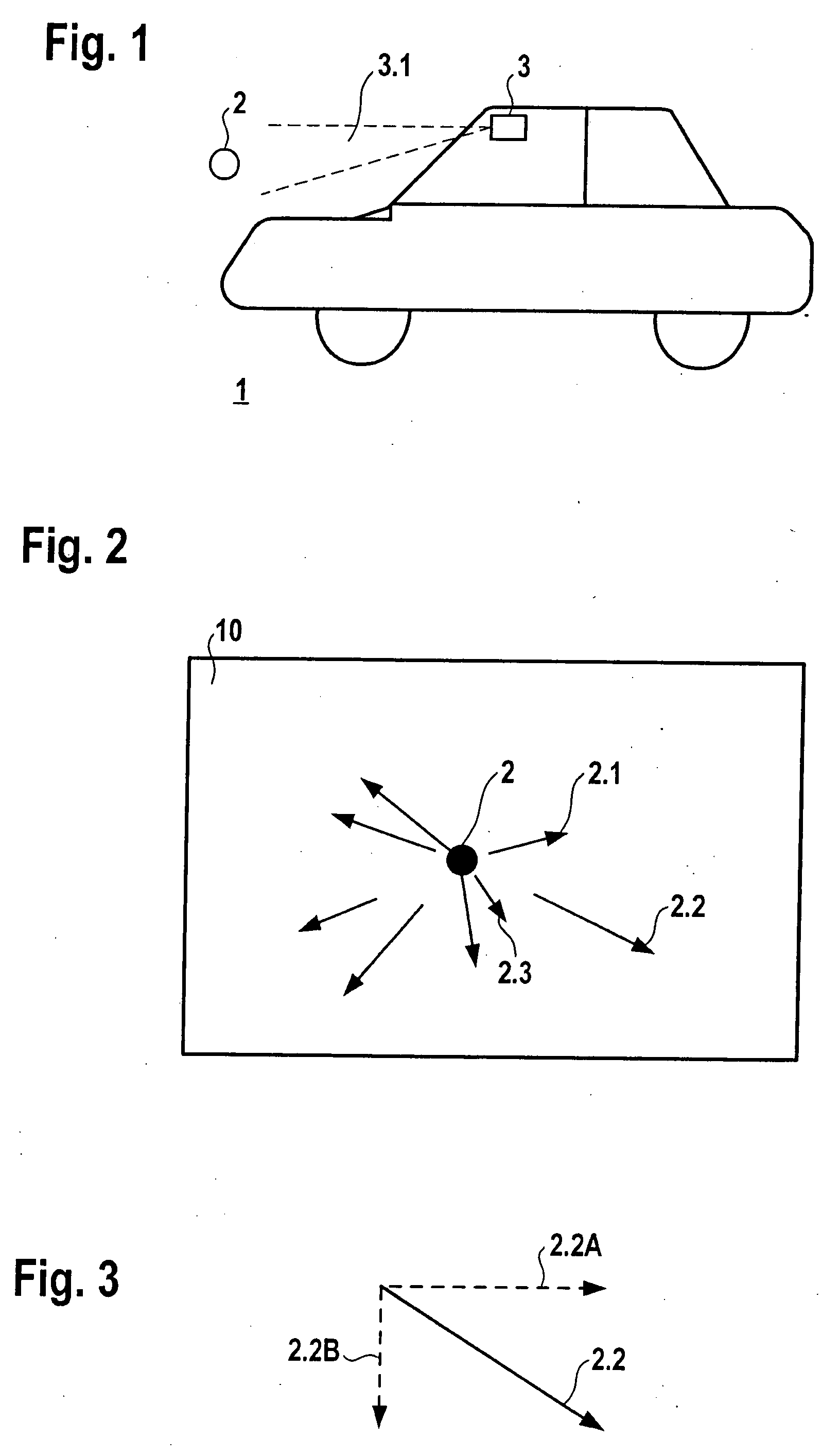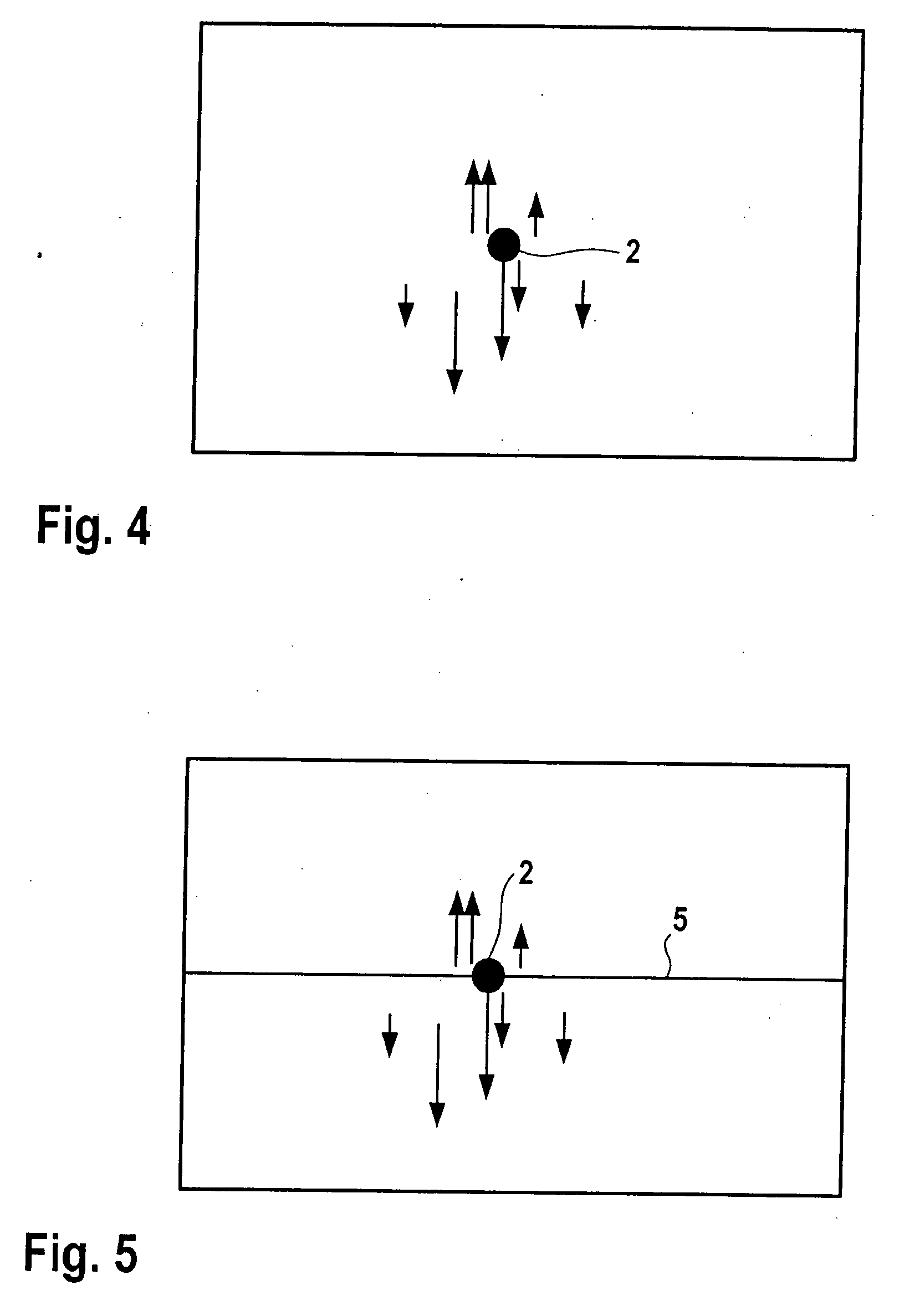Method for Detecting an Optical Structure
a technology of optical structure and detection method, applied in the field of optical structure detection, can solve the problems of difficult to detect body structures using image recording systems, difficult to implement this method for image objects without distinct edges, and inability to calibrate based on edges
- Summary
- Abstract
- Description
- Claims
- Application Information
AI Technical Summary
Benefits of technology
Problems solved by technology
Method used
Image
Examples
Embodiment Construction
[0019] For many applications in the field of video-based driver assistance systems, which have at least one image recording system for detecting the vehicle surroundings, the detection of optical structures is of great significance. For the purposes of this application, the term optical structure includes, for example, horizontal lines within an image detected by the image recording system or outlines or contours of objects within an image. The optical structures recorded by the image recording system are used, for example, for calibrating the image recording system or for detecting the position and movement of the vehicle carrying the image recording system. Information derived from the detected optical structures is furthermore advantageous for the vehicle dynamics control system of the vehicle and in particular for lateral guidance as well. For the calibration of onboard image recording systems, expensive stationary methods are still being carried out in the production plants of ...
PUM
 Login to View More
Login to View More Abstract
Description
Claims
Application Information
 Login to View More
Login to View More - R&D
- Intellectual Property
- Life Sciences
- Materials
- Tech Scout
- Unparalleled Data Quality
- Higher Quality Content
- 60% Fewer Hallucinations
Browse by: Latest US Patents, China's latest patents, Technical Efficacy Thesaurus, Application Domain, Technology Topic, Popular Technical Reports.
© 2025 PatSnap. All rights reserved.Legal|Privacy policy|Modern Slavery Act Transparency Statement|Sitemap|About US| Contact US: help@patsnap.com



